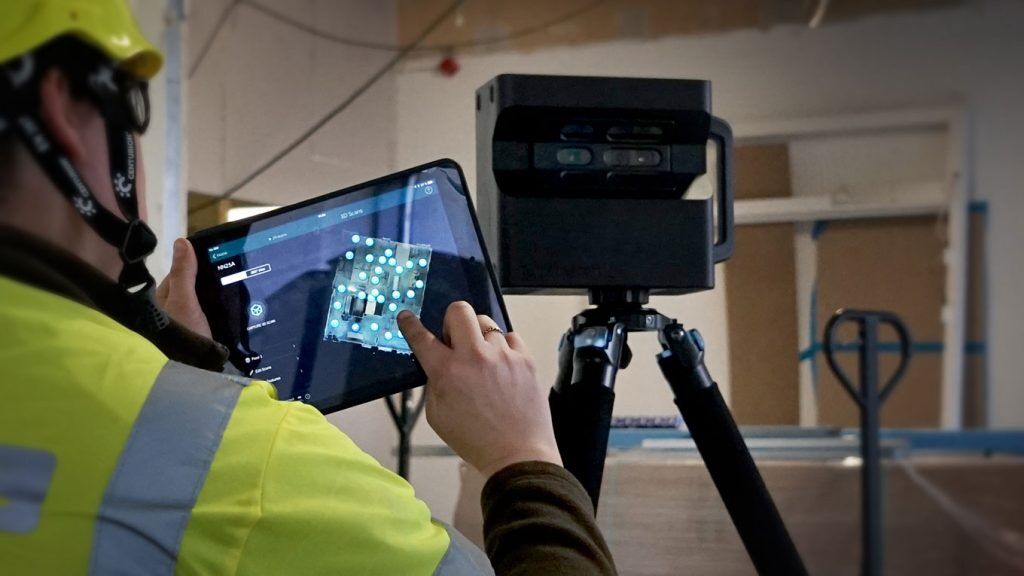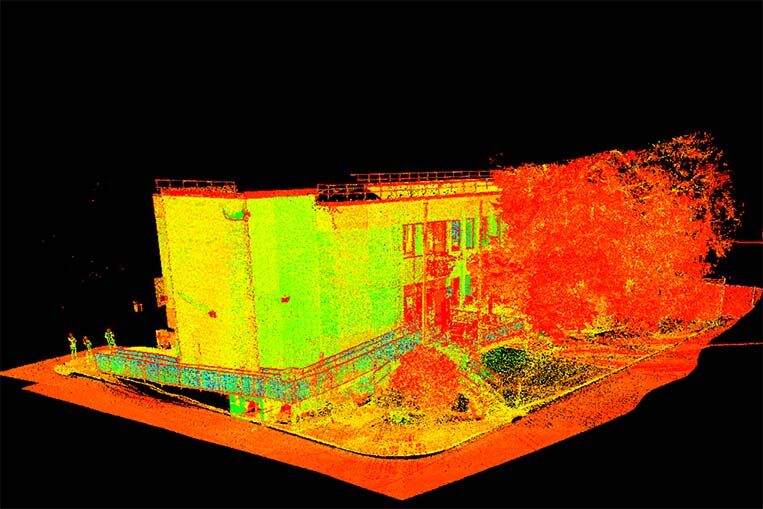Enhancing Manufacturing Processes: The Influence of 3D Laser Scanning on Quality Assurance
3D laser scanning modern technology is changing quality control in production. By giving high-resolution data and exact dimensions, it makes it possible for suppliers to recognize inconsistencies from requirements effortlessly. This advancement not just simplifies examination procedures yet likewise improves operational efficiency. 3D Scanning. The application of this technology comes with its very own collection of difficulties. Exploring these facets exposes the wider implications for sectors and the future landscape of production

Comprehending 3D Laser Scanning Modern Technology
Although 3D laser scanning technology has actually progressed significantly in recent times, its fundamental concept continues to be straightforward: catching the exact geometry of things using laser beam of lights. This technology employs laser light to measure distances between the scanner and different factors on a things's surface area. The data collected is then processed to create an in-depth 3D design, properly mirroring the measurements and shapes of the checked item.
Commonly, 3D laser scanners can be categorized into two main kinds: call and non-contact scanners. Call scanners literally touch the things to collect dimensions, whereas non-contact scanners utilize laser beam of lights to catch data from a distance. The flexibility of this innovation enables its application across various industries, including production, style, and building. Its capacity to generate high-resolution designs helps with quality assurance, reverse engineering, and quick prototyping, inevitably boosting layout precision and effectiveness in manufacturing processes.
Benefits of 3D Laser Scanning in Manufacturing
As manufacturers seek to improve performance and precision in their procedures, the advantages of 3D laser scanning have actually ended up being significantly evident. This cutting-edge modern technology permits fast and highly accurate measurements of complicated geometries, substantially reducing the moment required for quality checks. By catching detailed data, producers can recognize discrepancies early in the manufacturing procedure, therefore reducing waste and rework prices.
3D laser scanning assists in far better style recognition, enabling engineers to compare as-built conditions with initial requirements. This ability ensures that any kind of discrepancies are without delay resolved, boosting overall product top quality. Additionally, the technology supports the creation of electronic twins, which can be used for simulations and procedure optimizations. Therefore, producers not only boost their operational performance however also improve their affordable advantage in the market. Generally, the assimilation of 3D laser scanning stands for a transformative action towards achieving greater criteria in making quality control.
Assimilation of 3D Laser Scanning Into Quality Control
Incorporating 3D laser scanning right into quality control processes enhances the accuracy and performance of inspections throughout production. This modern technology allows manufacturers to catch comprehensive, high-resolution information of components and assemblies, permitting specific measurements and comparisons against layout specifications. By using 3D laser scanning, companies can recognize inconsistencies from tolerances better, which is crucial for keeping product honesty.

Real-World Applications and Study
Real-world applications of 3D laser scanning in producing show its transformative impact throughout various sectors. As an example, aerospace firms utilize this innovation to conduct precise examinations of elements, ensuring they satisfy stringent security requirements. A significant instance involved a leading airplane manufacturer that used 3D laser scanning to streamline its quality assurance procedures, significantly decreasing examination times and errors.
In the vehicle field, manufacturers have actually implemented laser scanning to produce digital twins of their automobiles, making it possible for real-time modifications throughout manufacturing. One vehicle firm reported a 30% decrease in rework costs after integrating this technology into their assembly lines.
Additionally, in the consumer products market, business are utilizing 3D laser scanning for rapid prototyping, allowing for quicker models and boosted product designs. These applications illustrate how 3D laser scanning not only enhances accuracy but also enhances performance and innovation throughout numerous manufacturing domains.
Getting Rid Of Obstacles in Execution
Applying 3D laser scanning in producing presents numerous obstacles that organizations must browse to totally realize its benefits. One significant hurdle is the first price of tools and software, which can deter firms from embracing this innovation. Additionally, integrating 3D laser scanning right into existing process calls for getting over resistance to change among employees, necessitating comprehensive training programs to ensure proficiency. Information monitoring additionally positions an obstacle, as the high volume of info produced by 3D scanning have to be properly refined and examined to obtain workable insights. Compatibility problems with heritage systems may prevent seamless integration, requiring prospective upgrades or alterations. Attending to these difficulties is vital for suppliers intending to enhance high quality control and optimize production procedures. By establishing clear techniques for training, investment, and information management, companies can mitigate these obstacles and launch the transformative potential of 3D laser scanning in their operations.
Future Trends in 3D Laser Scanning for Manufacturing
As producing continues to evolve, the assimilation of 3D laser scanning with enhanced automation is expected to change manufacturing procedures. Boosted information analytics will certainly play an essential duty in enhancing and optimizing workflows quality assurance. These patterns highlight the possibility for greater effectiveness and precision in making settings.

Increased Automation Assimilation
The combination of automation in production has been progressive, the future of 3D laser scanning is positioned to accelerate this pattern substantially. As manufacturing processes become progressively intricate, the need for accurate, real-time measurements grows. 3D laser scanning modern technology provides automated information capture, reducing labor prices and reducing human mistake. This integration permits manufacturers to improve quality assurance procedures, enabling quick detection of inconsistencies in production. In addition, the placement of 3D laser scanning with robotics and automated systems facilitates seamless operations, improving general effectiveness. As suppliers embrace these sophisticated modern technologies, they can anticipate enhanced precision and efficiency, placing themselves competitively in a quickly developing market. The harmony in between automation and 3D laser scanning notes a considerable leap onward in producing technology.
Enhanced Data Analytics
The assimilation their website of automation has actually paved the means for innovations in data analytics within the domain of 3D laser scanning. Producers are increasingly leveraging sophisticated algorithms and artificial intelligence techniques to examine substantial datasets created by laser scans. This boosted data analytics capacity enables real-time surveillance of producing procedures, enabling the recognition of deviations and flaws better than conventional approaches. Anticipating analytics can visualize prospective concerns, considerably lowering downtime and improving overall effectiveness. Moreover, the capacity to imagine data in three dimensions offers much deeper the original source insights into production operations, fostering far better decision-making. As 3D laser scanning innovation continues to advance, the function of data analytics will certainly become progressively important in driving development and preserving competitive advantage in production.
Frequently Asked Inquiries
What Industries Benefit the Many From 3D Laser Scanning?
The industries that benefit most from 3D laser scanning include production, building and construction, aerospace, auto, and health care. These fields utilize the technology for precision measurements, quality control, and reliable style processes, substantially boosting general functional performance.
Just How Does 3D Laser Scanning Compare to Traditional Dimension Approaches?
3D laser scanning supplies greater precision and rate contrasted to conventional measurement techniques. It records thorough geometries promptly, reducing human mistake and facilitating far better analysis, which inevitably improves overall top quality control in various industries.
What Is the Expense of Implementing 3D Laser Scanning Innovation?
The cost of executing 3D laser scanning modern technology differs substantially, typically ranging from $10,000 to $100,000, depending on equipment, training, and software program. Organizations needs to evaluate these expenses against potential performance and quality improvements.
Are There Details Software Application Needs for 3D Laser Scanning?
Yes, 3D laser scanning requires specific software, consisting of data processing and modeling applications. Common choices include CAD software, point cloud processing devices, and specialized applications that facilitate the integration and evaluation of scanned data for ideal i thought about this outcomes.
How Lengthy Does a Normal 3D Laser Scanning Process Take?
A normal 3D laser scanning procedure can take anywhere from a couple of minutes to numerous hours, depending on factors like the size of the item, complexity of the environment, and needed level of information for accuracy.
3D laser scanning technology is transforming top quality control in manufacturing. 3D laser scanning technology has evolved substantially in recent years, its basic principle continues to be straightforward: catching the accurate geometry of objects making use of laser beams. Integrating 3D laser scanning right into high quality control processes improves the accuracy and performance of inspections throughout production (3D Scanning). 3D laser scanning technology uses automated data capture, reducing labor expenses and lessening human error. The expense of applying 3D laser scanning technology differs substantially, generally varying from $10,000 to $100,000, depending on training, tools, and software program